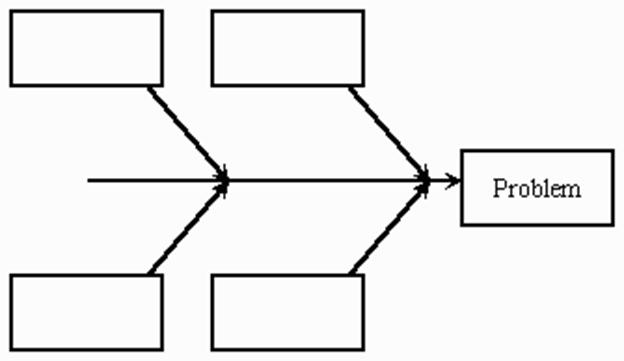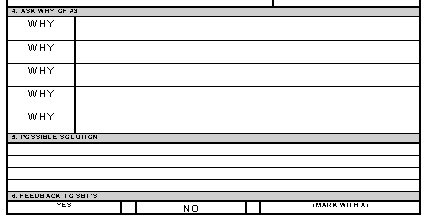3 most common Root Cause Analysis tools
If you are implementing a Root Cause Problem Elimination process for your plant you need to determine a documentation tool. There are many different options. Here are some of the best documentation tools for Root Cause Analysis.
Some of the most common are:
- Fishbone diagram
- 5 – why
- Cause-and-effect diagram

Fig 1. Cause-and-effect diagram

Fig 2. Fishbone Diagram

Fig 3. 5-why
3 reasons to use cause-and-effect diagram
- The Cause-and-effect diagram helps the problem solver(s) to “divide and conquer” the problem. It allows us to focus on one “branch” of the diagram at a time. Humans are very poor at thinking at many things at one time (that is why you are driving your car, you turn down the volume of the radio when you are trying to find an unknown street sign or exit)
- The Cause-and-effect diagram (pictured as above or in a tree structure) is the only way to explain and research the cause and effect relationship in an even chain. The other diagrams don’t do this well.
Why not use the Fishbone for root cause analysis?
- The fishbone diagram usually has four different groupings. There are many variations, but a common one is “machine, material method, measurement”. However, the use of the diagram is to list anything that may have an influence to each topic. This is very different from explaining and proving a cause and effect. The fishbone is a tool for brainstorming ideas in different areas, not to prove cause-and-effect relationship. As an engineer, I would prefer 4 columns in an excel sheet rather than the cluttered Fishbone diagram, but that is a personal reflection.
- Suggestion, don’t use the fishbone for the analysis, but use it for brainstorming around how to find additional information from clues previously discovered.
Why not use a 5-why diagram for root cause analysis?
- First, the number 5 is irrelevant, many of root cause analysis events end up with 3, 4, 5, 6, 7, 8, 9… pick a number steps, so why have a limitation factor of 5?
- The 5-why ignores that “branches” or several possible causes have to be researched to reach the root causes of a problem. It is therefore an unpractical tool for root cause analysis.
- Many organizations use the 5-why for reporting the “selected” root cause path. The problem with that is two-fold. First, there is seldom just 1 path or branch that is the cause of a problem (always several causes in a cause and effect chain), second, we think it is equally important to show both what possibilities in a study that are eliminated and why together with the actual root causes.
Remember these are tools and don’t replace the brain power needed to solve problems. Watch our Root Cause Problem Elimination YouTube video series about critical and creative thinking.




